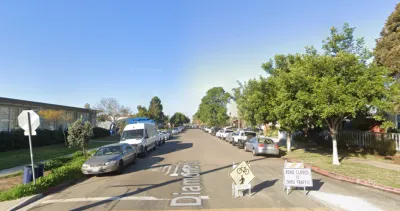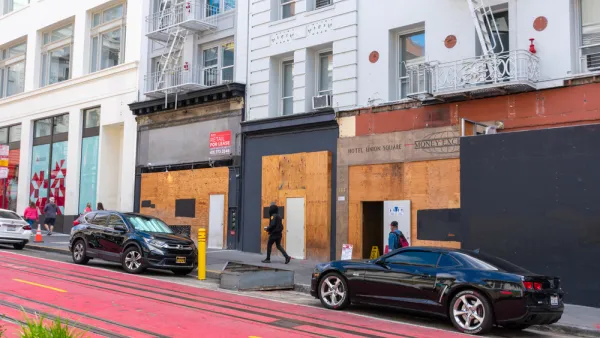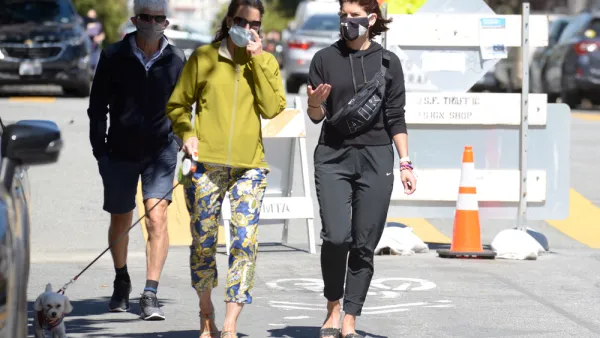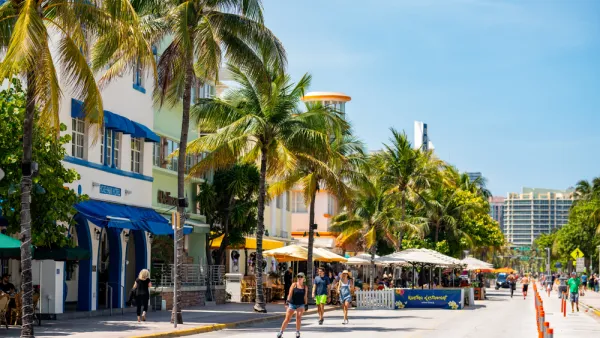Residents in Pacific Beach want the city to revise its design of the Diamond Street ‘slow street,’ the last remaining segment of pandemic-era pedestrian-oriented road in the city.

“San Diego’s controversial two-year experiment with ‘slow streets’ suffered another setback this week when Pacific Beach leaders demanded major changes to the only slow street segment that had been popular enough to survive,” reports David Garrick.
“Pacific Beach leaders say the benefits of having a new safe space to exercise and strengthen bonds among neighbors was outweighed by the city’s poor rollout of the program, confusion about the rules and poor treatment of residents.” According to planning group member Scott Chipman, “We need a comprehensive plan, not just the city throwing a couple signs out to say this street is now a park and you residents have to deal with it.”
“Wednesday’s hearing featured 16 speakers in favor of the slow street and 16 speakers against, said [Marcella Bothwell, leader of the Pacific Beach Town Council], suggesting the experiment could work with some upgrades and different behavior from users of the slow street.” While some residents brought up disrespectful behavior from the street's users, some opponents worry that Diamond Street would receive the same controversial bike lane treatment as Gold Coast Drive. “On Mira Mesa’s Gold Coast Drive, city officials did some re-striping in early April that created new bike lanes on either side of the road, with one vehicle lane in the center to handle car traffic in both directions.” But the design confused and angered some residents who felt the city didn’t provide enough notice and who feared an increased risk of head-on collisions.
Opposition to the city’s ‘slow streets’ implementation isn’t always just about drivers. “Community leaders in San Ysidro wanted a more permanent paseo instead of a slow street segment,” for example. “City officials say the program has taught them what works, what doesn’t work and how to cooperate with residents and neighborhood leaders on future slow streets projects. But the recent uproar in Mira Mesa raises questions about that.”
FULL STORY: San Diego’s only surviving ‘slow street’ facing new backlash, demands for safety upgrades

Analysis: Cybertruck Fatality Rate Far Exceeds That of Ford Pinto
The Tesla Cybertruck was recalled seven times last year.

National Parks Layoffs Will Cause Communities to Lose Billions
Thousands of essential park workers were laid off this week, just before the busy spring break season.

Retro-silient?: America’s First “Eco-burb,” The Woodlands Turns 50
A master-planned community north of Houston offers lessons on green infrastructure and resilient design, but falls short of its founder’s lofty affordability and walkability goals.

Test News Post 1
This is a summary

Analysis: Cybertruck Fatality Rate Far Exceeds That of Ford Pinto
The Tesla Cybertruck was recalled seven times last year.

Test News Headline 46
Test for the image on the front page.
Urban Design for Planners 1: Software Tools
This six-course series explores essential urban design concepts using open source software and equips planners with the tools they need to participate fully in the urban design process.
Planning for Universal Design
Learn the tools for implementing Universal Design in planning regulations.
EMC Planning Group, Inc.
Planetizen
Planetizen
Mpact (formerly Rail~Volution)
Great Falls Development Authority, Inc.
HUDs Office of Policy Development and Research
NYU Wagner Graduate School of Public Service




























